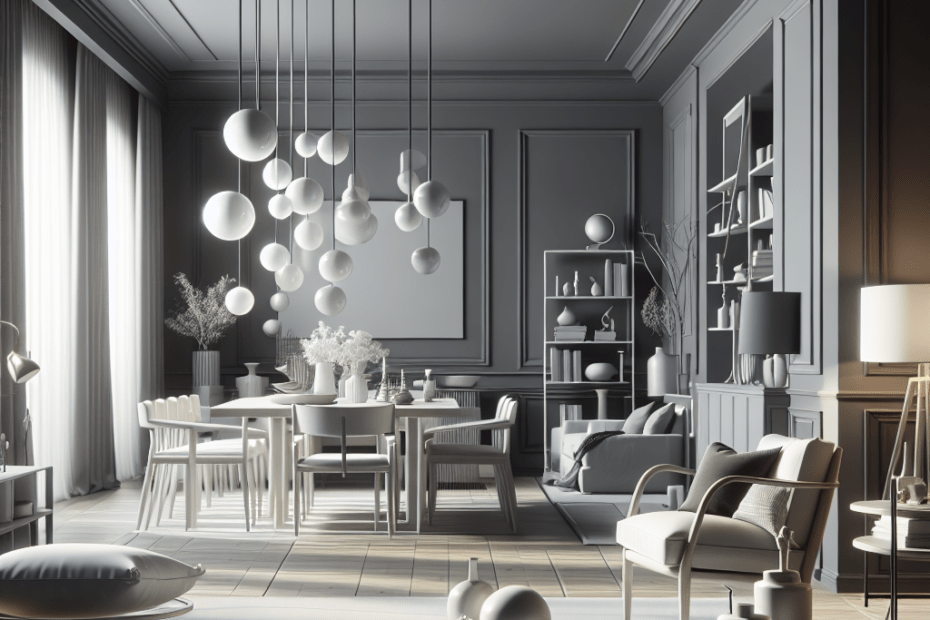“`html
Understanding Monotone Color Schemes
Monotone color schemes, often overlooked in the dazzling world of colors, offer a unique aesthetic that is both sophisticated and elegant. These schemes utilize variations in lightness and saturation of a single hue. Designers and home decorators alike find monotone palettes appealing because they deliver a cleaner, more cohesive look.
Why Choose Monotone Color Schemes?
Monotone color schemes are not just for minimalists. Their rise in popularity can be linked to the versatility and timelessness they bring to any space. According to a 2022 survey by the American Society of Interior Designers, approximately 30% of interior designers prefer monotone color schemes for its ability to bring sophistication and serenity into homes (ASID, 2022).
Steps to Create a Monotone Color Scheme
Creating a monotone color scheme requires a thoughtful approach. They should start by choosing a base color that evokes the mood they desire. Here are steps they can follow:
- Select a Base Color: Choose a color that reflects the essence and purpose of the space.
- Understand Lightness and Saturation: Experiment with different shades and tints to find a perfect balance.
- Utilize Textures: Incorporate various textures to add depth and interest.
- Accent with Neutral Colors: Use white, black, or gray to complement the primary hue without overpowering it.
Monotone Vs. Monochromatic Color Schemes
It’s essential to distinguish between monotone and monochromatic schemes. Although similar, monotone schemes rely on variations of a single hue within the same tonal value, whereas monochromatic schemes can explore both tones and shades of a single color. Understanding this can enrich their design choices.
Benefits of Using Monotone Color Schemes
There are several advantages to adopting monotone color schemes:
| Benefit | Description |
|---|---|
| Sophistication | Monotone schemes add a luxurious touch to spaces. |
| Easy Pairing | Streamlined designs make it easy to coordinate decor elements. |
| Visual Cohesion | A unified color contributes to a harmonious look. |
| Focus on Texture | Allows emphasis on material and texture variety. |
Examples of Monotone Color Schemes
They can witness monotone color schemes in various environments, from bedrooms to commercial spaces. A popular example is the iconic use of beige in Scandinavian interior design, which promotes warmth, relaxation, and elegance.
Key Takeaways
- Monotone color schemes use one hue at different saturations and lightness levels.
- They are suitable for those seeking a sophisticated and cohesive look.
- Choosing the right base color and adding texture are key elements.
- Properly executed monotone schemes can transform any environment into a timeless retreat.
FAQ Section
What is a monotone color scheme?
A monotone color scheme involves using different shades, tints, and tones of a single color to create a cohesive look.
How do they choose a color for a monotone scheme?
They should choose a base color that aligns with the mood or theme they want for the space and experiment with various shades for balance.
Are monotone and monochromatic color schemes the same?
No, monotone schemes stick to a single hue at various saturations, whereas monochromatic schemes can involve shades and tones of the same color.
What are common settings for monotone color schemes?
Monotone color schemes are popular in both residential and commercial environments such as bedrooms, living rooms, and offices.
Is it expensive to implement monotone color schemes?
No, they can be budget-friendly because they rely on a single color and make use of texture and material rather than multiple paint colors or patterns.
“`
**Sources:**
– American Society of Interior Designers (ASID), 2022. “2022 Interior Design Trends Survey.”
